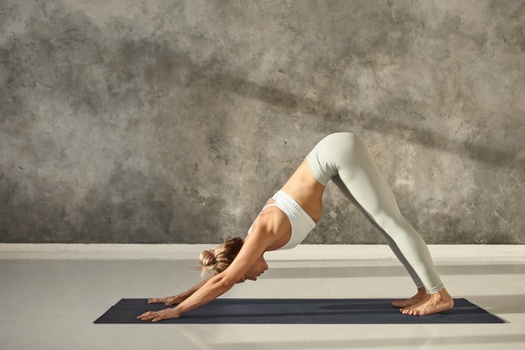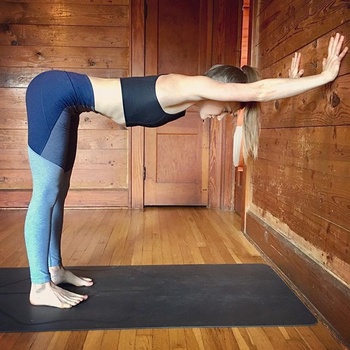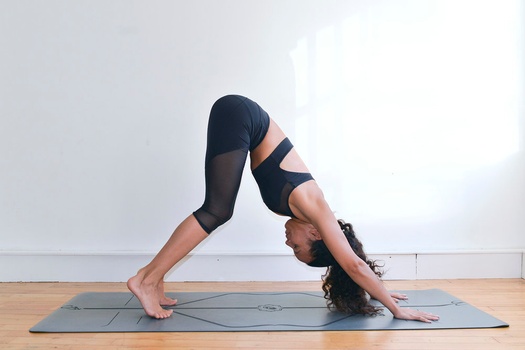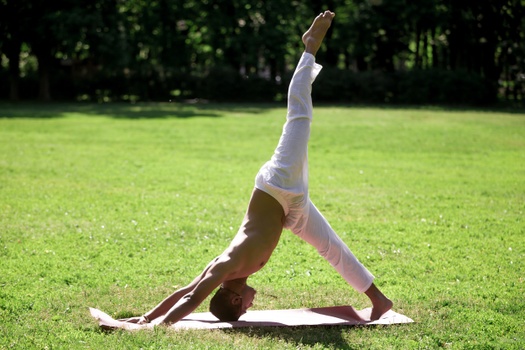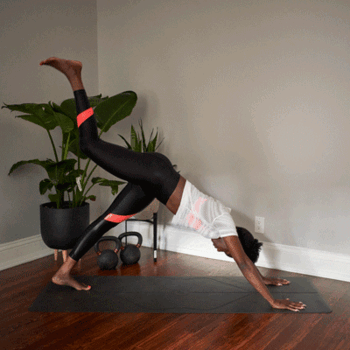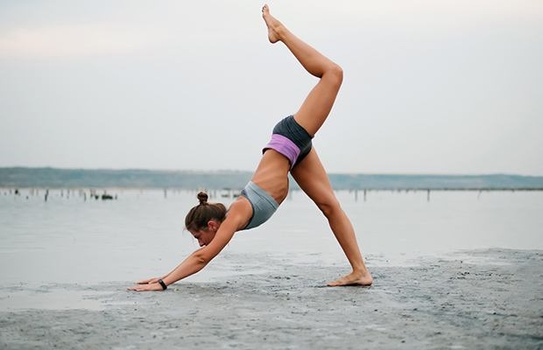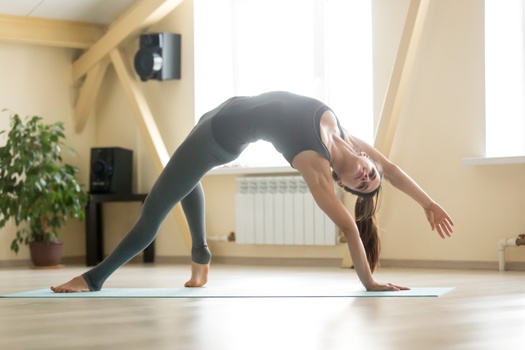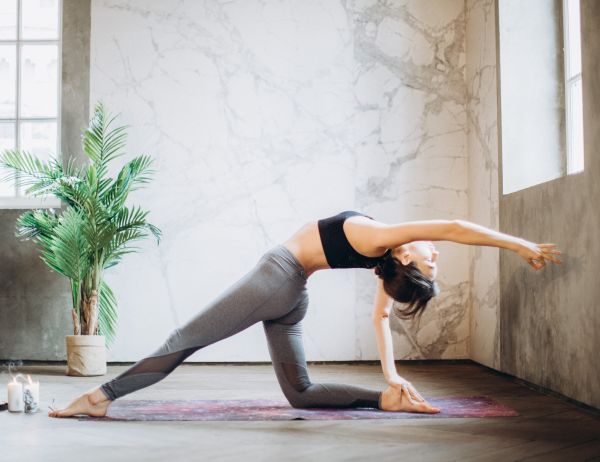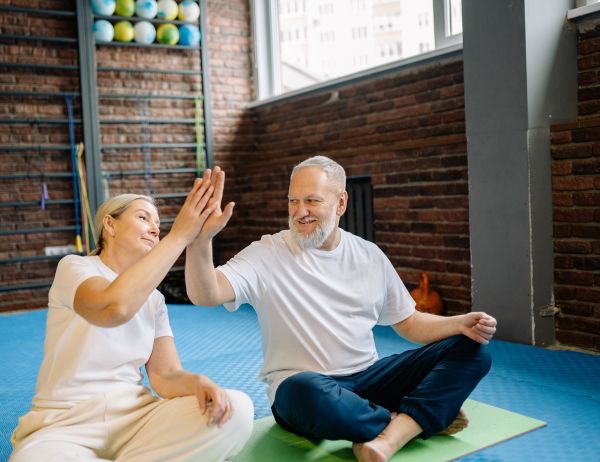The practice of Downward-Facing Dog Pose is divided into four different stages:
Part 1 - Preparatory Poses for Adho Mukha Svanasana
The Downward-Facing Dog Pose is known to target your spine, core, chest, and shoulders. So it’s essential to activate these areas of your body before getting into the primary pose.
Below is the list of some yoga asanas that will help:
1. Marjaryasana (Cat Pose) - This pose will activate your spine, shoulders, core, and tailbone area. Get into a tabletop position by placing your hands and shins on the ground. Inhale, press your knees and hands firmly into the mat and engage your core muscles.
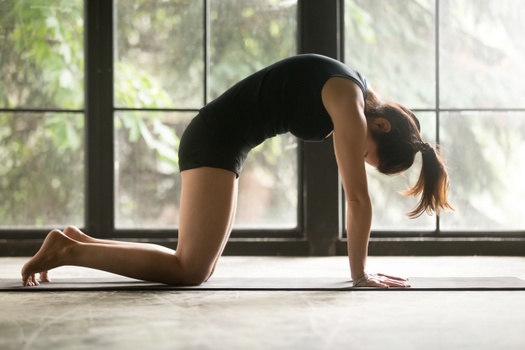
Now, exhale as you round your spine towards the ceiling, tuck your chin into your chest and focus your gaze towards your navel. Hold this for a few seconds. Now, release the post and allow your spine to return to a neutral shape.
2. Bitilasana (Cow Pose) - This pose is the cat pose’s counteraction and is very effective in activating the lower back, traps, and tailbone area. Stay in the tabletop pose, and all you need to do is change your spinal motion.
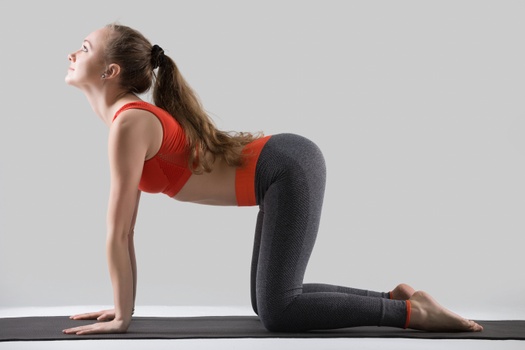
Inhale as you round your spine towards the yoga mat and gaze up at a 45-degree angle (where the wall and ceiling meet). Hold this pose here for a few seconds, and then again, allow your spine to return to a neutral stance.
3. Uttana Shishosana (Extended Puppy Pose) - This is a mini version of the Downward-Facing Dog posture. It’s effective in opening the chest, shoulders, spine, and upper back. Continuing from the Cat-Cow Pose, gently sit back on your shins and keep your arms flexing forward.
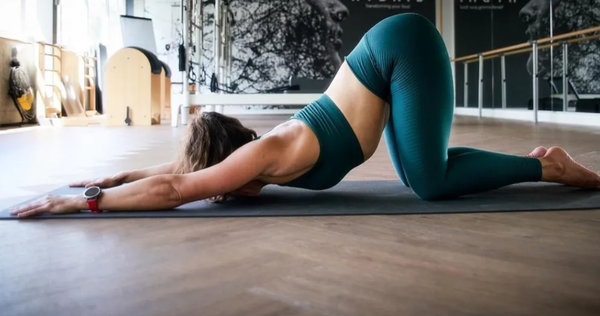
Ensure your upper body is engaged and bring your chest close to the ground. If you feel more flexible, try resting your chest on the ground to feel your shoulders deeply opening up.
Part 2: Step-by-Step Instructions to Perform Adho Mukha Svanasana
The following are steps to practice the Downward-Facing Dog Pose:
Step 1- Start from a tabletop position and place your hands, knees, and the tops of your feet flat on the mat.
Step 2- Slowly walk your hands to just ahead of your shoulders, keeping them as wide as the mat.
Step 3- Press your fingers into the mat, engaging your index fingers and thumbs by pressing them deeper into the mat.
Step 4- Inhale as you align your shoulders with straight arms and engage your core muscles.
Step 5- With an exhale, curl your toes under and lift your glutes up and back to form an inverted V. (If your hamstrings are hurting, try bending your knees).
Step 6- Press your heels onto the mat. Pull your traps and triceps toward your ears. Use your shoulders and palms to move the mat away from you.
Step 7- Hold this position for 5 to 10 full breaths. Release and relax by coming back down into the tabletop posture.
Breath Awareness:
Inhale: When you engage your core and upper body.
Exhale: When you are ready to lift your legs off your mat and flex in an inverted V.
Performance Duration for Beginners: Hold the Adho Mukha Svanasana for 30 to 60 seconds.
Performance Duration for Advanced: Hold the Adho Mukha Svanasana for 1 to 3 minutes.
Part 3: Things to Keep in Mind
These are some posture and alignment tips to keep in mind while performing Downward-Facing Dog, and will help you stay prevent injury:
Don’t lock your joints: This is the most common mistake that beginners make and can cause serious harm to your joint health, like severe joint pain or swelling. So, maintain a slight bend in your joints as you perform this pose.
Incorrect feet placement: Make sure that your feet are placed flat on the ground if you are holding this pose. This way, you can engage your hamstrings and quads more deeply.
Unable to hold the pose: If you feel shaky on all four limbs, try engaging your core muscles more deeply. If your core is not strong, try practicing a plank pose instead, or use a posture modification to build up your core strength.
Part 4: Relaxing Poses After Adho Mukha Svanasana
Here is the list of a few counter-poses to perform after Downward-Facing Dog:
1. Catur Svanasana (Dolphin Pose): From Downward-Facing Dog, bend your elbows and place your forearms on the yoga mat.
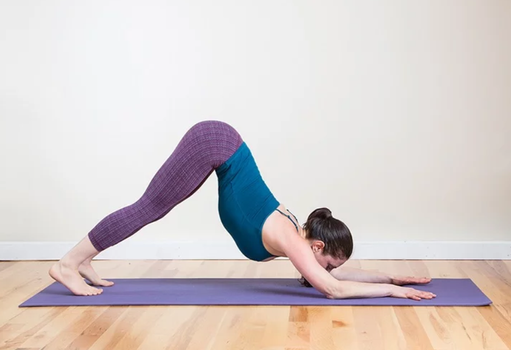
This pose will help you minimize the strain on your elbow and shoulder joints and give your lower body a deeper flex.
2. Balasana (Child's Pose): This versatile yoga asana works best as a deep chest opening pose like the Downward Dog Pose.
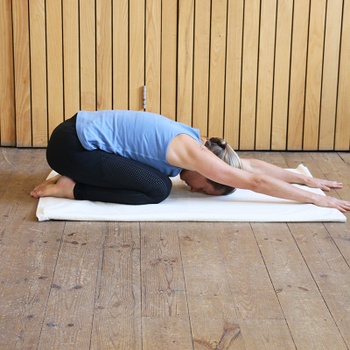
Simply sit onto your shins and heels, but make sure that your upper body is leaning forward, and your head is rested on the floor. Hold this for a few minutes to relax any tension in your spine, chest, and low back.
3. Prasarita Balasana (Extended Child Pose):
Continuing from Downward Dog, create a wide space between your legs and sit with your glutes between your legs.
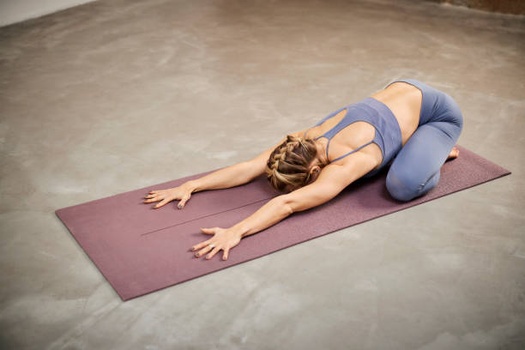
Rest your core, chest, and head on the mat, and try to take deep breaths as you hold this pose for a few minutes. This pose will help your spine and chest muscles return to their regular shape.
